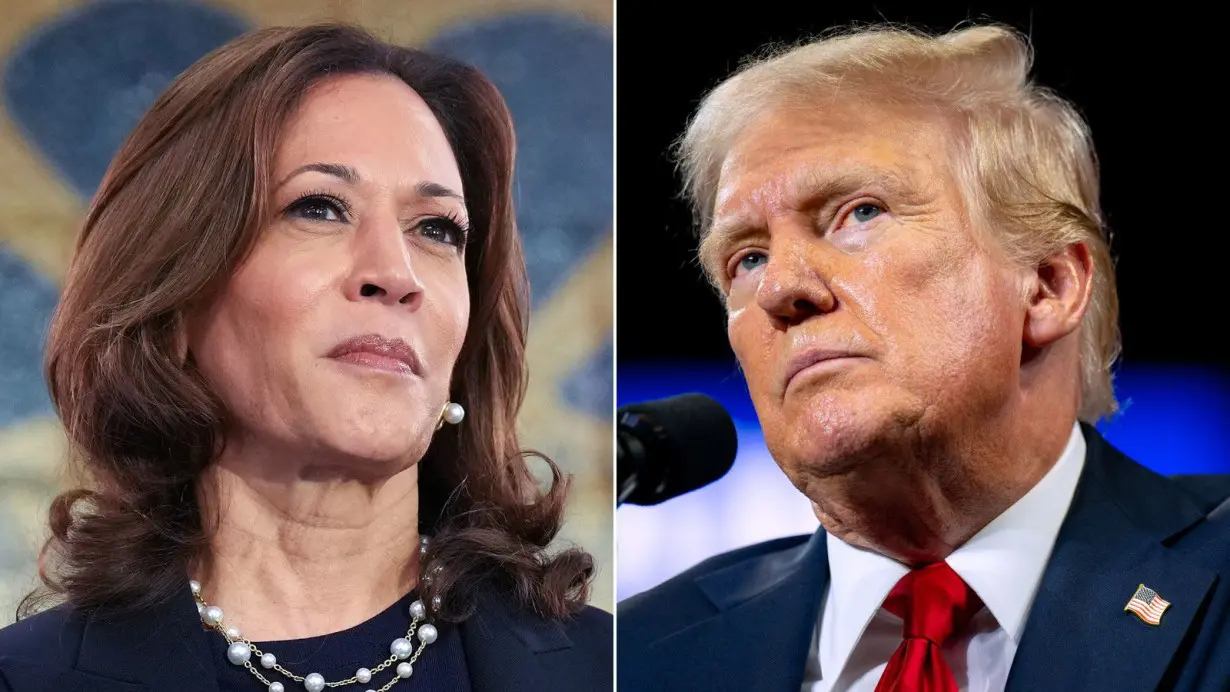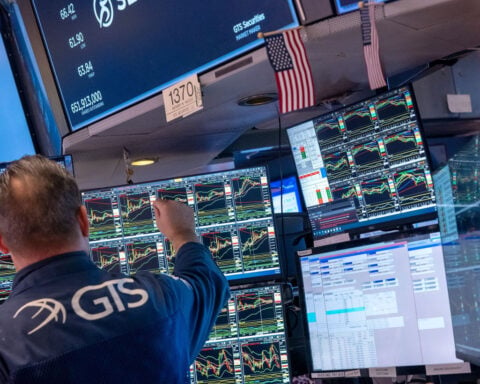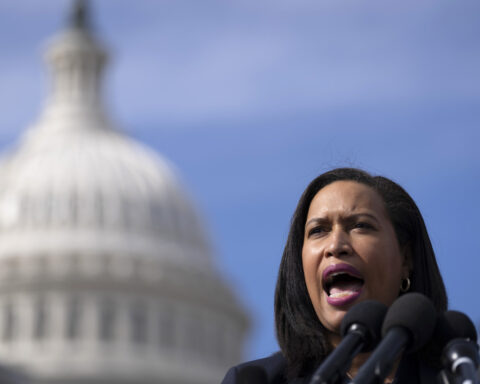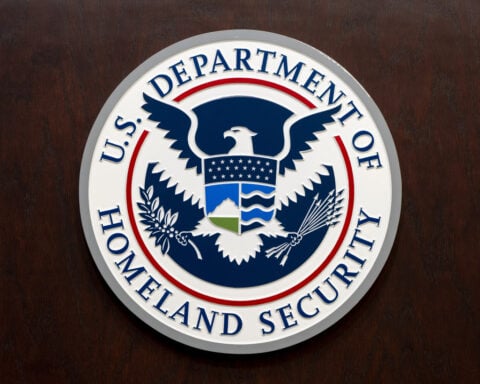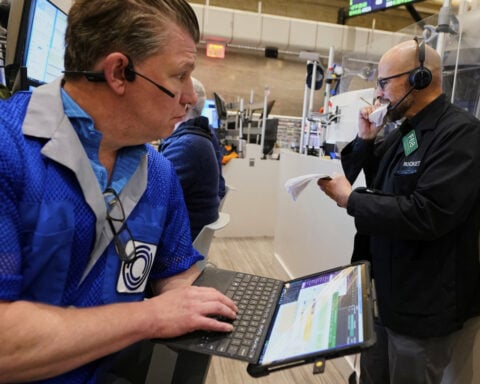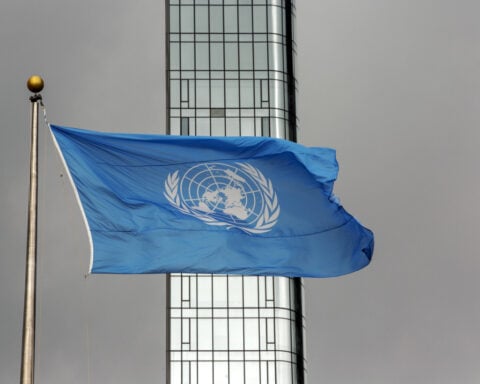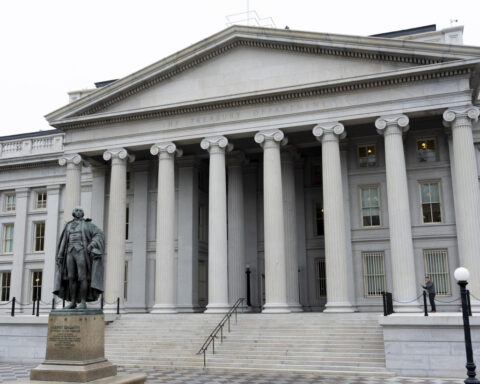(CNN) — Inflation is slowly moving back to what’s considered a more sustainable pace, but for many Americans, it’s hard to take solace: The post-pandemic spike in price hikes drastically increased the cost of living.
Both Vice President Kamala Harris and former President Donald Trump have pledged to bring those costs down. But some economists warn that the candidates’ aims — including an initial economic policy laid out Friday by Harris and the economic-related statements made in recent months by Trump — could push prices higher … and in the latter’s case, possibly much higher.
Both candidates’ plans would probably raise the deficit and increase demand, including through government spending and tightening the labor market, Joe Brusuelas, chief economist at RSM US, told CNN via email.
But Trump’s plan, or what he’s so far released of it, presents more risks, Brusuelas said. “Both inflation and the risk to permanently higher inflation are greater with the Trump proposal.”
Going deeper into the red
Analysis released Friday of Harris’ “Agenda to Lower Costs for American Families” from the Committee for a Responsible Federal Budget found that her proposed policies could increase deficits by $1.7 trillion over a decade (and could grow to $2 trillion if the housing policies were made permanent). The bulk of those costs, at an estimated $1.2 trillion, comes from Harris’ proposed expansion of the Child Tax Credit.
“Where we’re looking now, I think it’s likely that both campaigns are going to be in the red (fiscally) for their proposals,” Marc Goldwein, senior vice president and senior policy director for the CRFB, told CNN. “Higher deficits in the near term means more inflationary pressures, which either means people are going to see more cost increases at the grocery store, the pump, in their houses, or it means the Federal Reserve is going to have to respond by cutting rates more slowly.”
A separate analysis from the Tax Foundation estimated Harris’ proposed tax subsidies and federal program expansions would likely exceed $2 trillion in costs over 10 years.
Trump has so far not released as detailed an economic plan as Harris. However, a prior CRFB analysis of Trump’s suggestion to eliminate taxes on Social Security benefits found the plan would cost between $1.6 trillion and $1.8 trillion through 2035.
The CRFB is planning a more comprehensive analysis of both campaigns’ proposals in the coming weeks as more information — especially details as to how they’ll be funded — is released.
Both the CRFB and the Tax Foundation noted that their estimates could change as the Harris campaign provides more funding details and as the Trump campaign releases more comprehensive policy statements.
“Higher debt, both in the near term and the long term, means higher interest rates … and that’s particularly a problem for the government, because interest is now the second-largest government program,” Goldwein said. “We spend more in interest than we spend on Medicare, than we spend on defense.”
The Harris campaign has countered that the vice president’s economic plan will not add to the deficit.
“She supports the revenue raisers in the [2025 fiscal year] Biden-Harris budget that ensure billionaires and big corporations pay their fair share,” according to statement provided to CNN.
Risks of fueling demand
A central part of Harris’ economic plan is making housing more affordable. The plan, which elaborates on proposals by President Joe Biden, includes building 3 million new housing units, down payment assistance and a tax credit for first-time homebuyers.
Economists told CNN that the efforts to increase supply would help ease the current bottleneck that’s hampered the nation’s real estate market and caused prices to surge (and kept inflation elevated in the process); however, they were more reticent about the stimulus efforts.
“The problem right now is too many people chasing too few houses,” Justin Wolfers, professor of public policy and economics at the University of Michigan, told CNN. “The solution to that is not to give people more money to buy houses.”
Another possible boost to inflation could come from an expanded child tax credit through adding more money to people’s wallets.
However, during the Covid-19 pandemic, the expanded child tax credit helped families afford child care costs and living expenses and helped to keep people in the workforce, said Michelle Holder, a labor economist and associate professor of economics at John Jay College in New York.
There is a question about how much it will take to expand the tax cut permanently, Holder said. “On the other hand, I think there’s a reasonable counter to that critique, which is this gets money in the hands of people who will spend it. And families with children really do face high costs in terms of child care … and making it more affordable for parents, particularly women, to go out and work.”
Separately, economists have told CNN that Harris’ proposal to put a federal ban on price gouging could be problematic, saying similar laws motivated people to buy more goods than they otherwise would have.
Warnings of ‘reigniting inflation’
Trump has floated several economic proposals, including hiking tariffs on imported goods, extending his 2017 tax cuts, cutting the corporate tax rate even further, cracking down on immigration and enacting “mass deportations” and expanding drilling for domestic oil and energy.
In a June letter, 16 Nobel Prize-winning economists sent a stark warning that Trump’s agenda — specifically the raising of tariffs on China and international trading partners, extending the 2017 tax cuts and cutting the corporate tax rate even further — would not only “reignite inflation” but would have “a negative impact on the US’ economic standing in the world and a destabilizing effect on the US’ domestic economy.”
Harris on Friday claimed that Trump’s agenda, specifically the 20% tax on imports, would raise prices for a typical American family by $3,900 a year.
The $3,900 number Harris quoted was from the progressive Center for American Progress Fund, which analyzed a higher 20% tax on imports that Trump has cited in some rally speeches. A separate analysis from the Peterson Institute for International Economics estimated that the tariff proposals would cost the typical middle-income household at least $1,700 a year.
The Nobel Prize-winning economists’ letter did not mention Trump’s immigration proposals; however, mainstream economists cautioned that his stated intentions of deporting 15 million to 20 million people, possibly using the National Guard, could have dire consequences for the US labor market, which has finally normalized after dealing with the pandemic-caused employment supply and demand shocks.
Economists have told CNN that businesses would be forced to raise wages and prices. In addition, the rise in immigration has helped the labor market recovery and increased productivity, which has helped slow inflation.
This story has been updated with additional reporting.
The-CNN-Wire
™ & © 2024 Cable News Network, Inc., a Warner Bros. Discovery Company. All rights reserved.

 Trump has begun another trade war. Here's a timeline of how we got here
Trump has begun another trade war. Here's a timeline of how we got here
 Canada's leader laments lost friendship with US in town that sheltered stranded Americans after 9/11
Canada's leader laments lost friendship with US in town that sheltered stranded Americans after 9/11
 Chinese EV giant BYD's fourth-quarter profit leaps 73%
Chinese EV giant BYD's fourth-quarter profit leaps 73%
 You're an American in another land? Prepare to talk about the why and how of Trump 2.0
You're an American in another land? Prepare to talk about the why and how of Trump 2.0
 Chalk talk: Star power, top teams and No. 5 seeds headline the women's March Madness Sweet 16
Chalk talk: Star power, top teams and No. 5 seeds headline the women's March Madness Sweet 16
 Purdue returns to Sweet 16 with 76-62 win over McNeese in March Madness
Purdue returns to Sweet 16 with 76-62 win over McNeese in March Madness
